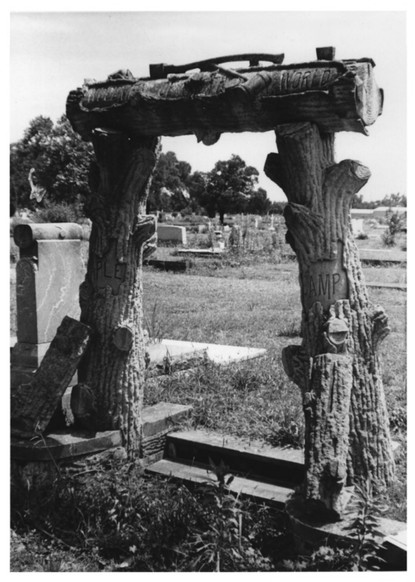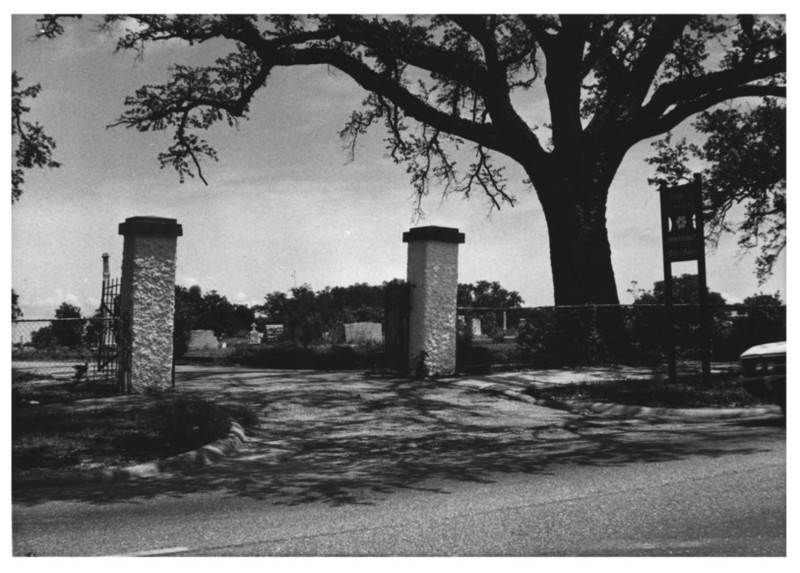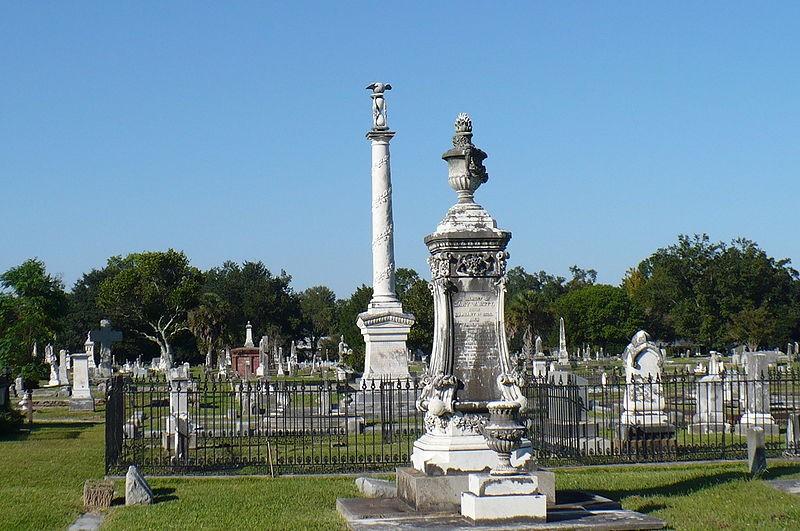Magnolia Cemetery
Introduction
Text-to-speech Audio
Images
Picture of the monument dedicating the plot of the Woodsmen of the World fraternal organization. Taken in 1984.

Picture of the Magnolia Cemetery gate as it appeared in 1984.

A picture of the Magnolia Cemetery in 2007.

Backstory and Context
Text-to-speech Audio
Before the establishment of Magnolia Cemetery, The Old Spanish Cemetery in Cathedral Plaza served the needs of the city of Mobile until the early 1800s. The rise of yellow fever and a growing population made it necessary for more graveyards to be built within the city. In October of 1836, the city of Mobile bought 30 acres from Samuel Garrow. At the time of its construction, the Magnolia Cemetery was outside of city limits and was a distance away from the population center of town. When it was originally built the cemetery was called the “New City Cemetery” until it was renamed by the City Council on January 15th, 1867, to “Magnolia Cemetery.”
In 1847 the city started allowing lots to be reserved by fraternal organizations that could be used by their organization members. This policy allowed for members of those organizations to have a place within the cemetery so long as they paid for their membership dues, letting those of lower status or pay still have a final resting place. These plots are groupings of fraternal organizations and have symbols of the related organization upon the various headstones of their members. The list of organizations that benefited from this policy includes The Woodmen of the World, the Baymen’s Benevolent Association, and the Workingmen’s Timber and Cotton Benevolent Association. In 1873 this policy of offering free spaces for organizations was discontinued by the city.
During the period of the Civil War, a portion of the cemetery was set aside for Confederate Soldiers. Originally the area was called Soldier’s Rest when founded in 1862 but was later renamed Confederate Rest. The Confederate Rest contains 1,100 burials of Confederate Soldiers, along with memorials to the crew of the submarine H. L. Hunley, the Alabama State Artillery, and the Mobile Cadets. Notable amongst those buried is Confederate General Braxton Bragg, marked by a large statue of an urn draped with an officer’s overcoat. Also encompassed within the grounds of Magnolia Cemetery is the Mobile National Cemetery, a US Army cemetery that contains Union soldiers that was annexed from Magnolia Cemetery in 1866.
Just to the south of the National Cemetery annex is the Jewish Cemetery area that was established in 1879. This area is under the ownership of the Springhill Avenue Temple. It is similar to the main section of Magnolia with a cast-iron gate and encircled by a fence. Just south of this cemetery is another section established as a Jewish Cemetery under the ownership of the orthodox congregation at Dauphin Street Synagogue. This section was established more towards the end of the 19th century and after the 1940s gained a set of standards for headstone designs.
By 1981 the Magnolia Cemetery was in severe disrepair. According to original plans, the city was only responsible for the upkeep of the roads on the property, with actual plot and grounds maintenance left up to the site owner. Over the decades families who had history within Magnolia Cemetery had moved on or had died out, resulting in a lack of lineage to care for the cemetery. As a result of this, the Historic Mobile Preservation Society founded the Friends of Magnolia Cemetery to conduct volunteer cleanup days. Not long after the cemetery was added to the National Register of Historic Places on June 13th, 1986. Eventually, in 1987 the Friends made a contract with the City of Mobile to operate the cemetery and hire their own staff. Funds of the city’s that were previously set aside for the cemetery were reallocated to the Friends for the purpose of cemetery upkeep. Today the cemetery still sees burials a few times a month.
Sources
Friends of Magnolia Cemetery. History, Magnolia Cemetery. January 1st 2009. Accessed November 12th 2020. http://www.magnoliacemetery.com/default.htm.
Sieller, Anne L.. Magnolia Cemetery including Mobile National Cemetery, National Register of Historic Places. June 13th 1986. Accessed November 12th 2020. https://npgallery.nps.gov/NRHP/AssetDetail?assetID=60ed2dd4-16be-4e69-8273-5c4ed611008c.
Sledge, John S.. Magnolia Cemetery, Encyclopedia of Alabama. March 13th 2007. Accessed November 12th 2020. http://www.encyclopediaofalabama.org/article/h-1105.
Image sourced from: https://npgallery.nps.gov/NRHP/GetAsset/84970b21-be32-4e1f-ac60-5c87e1c6fbb5/
Image sourced from: https://npgallery.nps.gov/NRHP/GetAsset/84970b21-be32-4e1f-ac60-5c87e1c6fbb5/
Image sourced from: https://commons.wikimedia.org/wiki/File:Magnolia_Cemetery_Mobile_Alabama_14.JPG
